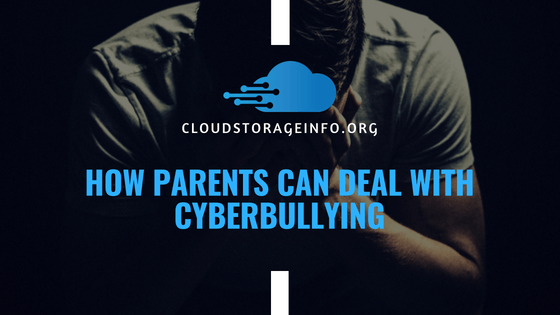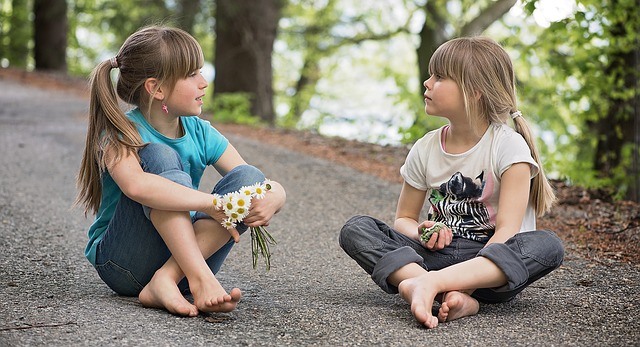
How Parents Can Deal With Cyberbullying
Bullying is now in the spotlight more than ever before and it’s as severe as it ever has been. Physical and verbal attacks, making threats, spreading rumours, and other forms of aggressive behaviour have pushed some teens to the point of suicide. One reason bullying has become more visible to adults is that much of it is taking place on the internet. Cyberbullying (via websites, chat, text messaging, social media sites, etc.) is not making bullying in-person less common, it’s just adding a new dynamic to an old problem. If you’re a parent, it’s important to know how to prevent, recognize, and address cyberbullying, and it’s essential for your child to be able to talk about and overcome the issue.
Preventing It
The first part of preventing your child from being cyberbullied is to start a conversation about it. Do your research on the various forms and explain to your child exactly what cyberbullying is, its harmful effects, and why it’s wrong. Then encourage them to tell you if it’s happening to them or someone they know. It’s common for kids not to tell their parents about instances of bullying, but keeping a dialogue open could make your child feel more comfortable talking about it.
It’s also helpful to set aside times when everyone in the house is “unplugged”, such as dinner time on weekdays or other family time on the weekends. Putting the technology down, as well as having your child invite friends over to the house, will provide your child with real-life relationships and interactions, which can help put negative virtual communication into perspective. Furthermore, teach your child to use their instincts when it comes to cyberbullying. Explain that if they see or read things online that make them feel strange or uncomfortable, they should bring it up to you so you can decide whether it’s appropriate.
Recognizing It
It’s common for parents to be unaware of their child being cyberbullied until it has already become severe. While there’s nothing you can do to fully bully-proof your child or force them to tell you when it’s happening, you can look for tell-tale signs. Victims of cyberbullying often become socially inactive or withdraw from their family. If you notice a pattern of your child retreating to their bedroom when they get home from school to remain there for the rest of the night, you should start a conversation. If you notice them having sleeping problems, it can be another sign. Also, if your child seems to be avoiding their phone or computer, or if they’re consistently wanting to avoid school, it could mean that they’re dealing with bullying and looking to escape it. If you recognize any of these signs, don’t hesitate to talk to your child.

Addressing It
If your child has been the victim of abusive comments or images online, it’s important to address the issue. First, ask your child for the details of the bullying, such as what has been happening and for how long. Encourage them not to respond to the bullying unless it persists, at which they should calmly call out the abusive behaviour and ask for it to stop, rather than respond with aggression. Ask your child to take screenshots of the behaviour to keep as evidence, and then delete the hurtful posts. Then you can untag or flag photos for removal, block the person/people behind the bullying, and change any passwords and privacy settings on the websites.
If the culprit of the bullying attends your child’s school, you’ll need to involve administration. It’s essential that you follow a few guidelines when you contact the school: include your child in every decision and action; be prepared with information about the details of the bullying; make an appointment to talk with an administrator or teacher in person; strategize with the school on ways to stop the bullying and stay in contact with the school as it plays out; and contact the local education authority if the school doesn’t cooperate.

Peer Pressure in Social Media
Social media, like any technology, has its pros and cons. Along with being fun and enjoyable, it provides the opportunity to connect with extended family members, meet people from around the world, and learn important communication skills. It also offers a plethora of information to inspire kids to live out their potential by eating healthier, staying in shape, thinking creatively, and so on. However, when used out of balance and with the wrong intent, social media can serve as a platform for negative influence and it can be a dangerous tool for bullying and crime.
The anonymity of the internet works in favour of those bullying and it makes it easier for them to influence their peers to engage in the bullying. Teens are generally very impressionable, which is why it’s common for kids to join in on making nasty comments and spreading hurtful rumours, just to impress their peers and fit in. A lot of the time, they don’t know what damage they’re causing. Sometimes the pressure to fit in on social media or becoming the target of cyberbullying can lead to severe anxiety, depression and, in the most extreme cases, suicide.
Keeping It Positive
As a parent, you want to make social media a positive influence on your child and reap the benefits rather than experience the negative aspects. You can do this by monitoring the sites your child visits and who they follow. It’s important that they follow and connect with people who present a positive outlook on life and inspire the virtuous character. Also, don’t let them spend every waking moment online. If necessary, have a talk with them and set some reasonable ground rules. It’s important for your child to understand why you limit their time online and that it’s not because you want to take the fun out of life. Once you set the rules, be sure to stick to them.
As technology advances, bullying is happening in many different forms and is being exposed more than ever. No parent wants their child to experience cyberbullying, and it can be hard to know when they’re being bullied until it has already become a problem. It’s essential to take the steps you can to prevent it and to always be on the lookout for signs that it may be happening. If it turns out your child is being bullied, it’s crucial that you address it right away. Finally, it’s important to stay involved with who your child follows and connects with on social media so that you can make sure it’s a positive influence.
Guest article by Janice Miller.
Do you have any thoughts of your own on cyberbullying? Let us know down below!

Unfortunately as much as the internet has brought a lot of good to the world, it’s also brought some bad, such as this. It used to be that children were free from bullying such as this at home, but now as they all have mobile phones, they can be bullied and harassed in the privacy of their own homes. This article is informative and well written and offers good advice to parents.